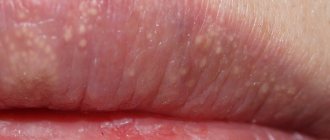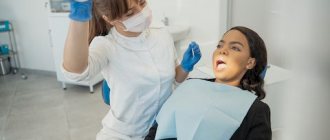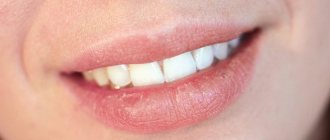Treatment
How to treat pemphigus in a child? The main drugs today are hormones from the group of glucosteroids. In this case, systemic therapy is carried out without age restrictions.
Treatment of pemphigus has several main directions:
- preventing the appearance of new blisters and erosions;
- healing of affected areas of the skin.
Glucosteroids are administered in increased dosages. Due to this technique, the intensity of the formation of new foci decreases and the restoration process begins in existing erosions. This process takes about 2 weeks. Subsequently, the patient is transferred to maintenance hormonal therapy. The drug does not change, but the dosage is significantly reduced.
Viral pemphigus in children treatment is aimed at suppressing the virus. Pemphigus vulgaris requires the administration of a larger volume of drugs than foliaceus. The transition to maintenance therapy is carried out gradually. Moreover, the vast majority of patients are forced to take daily injections of maintenance doses of glucosteroid drugs throughout their lives.
Children should take hormonal medications simultaneously with calcium and vitamin D. The effectiveness of treatment increases due to the use of immunosuppressive drugs from the first days of treatment. These drugs have a depressing effect on the activity of the body's immune system.
Early stages of treatment often involve the use of procedures aimed at clearing the blood of aggressive antibodies. Such procedures include hemodialysis and plasmapheresis. The skin must be treated with antiseptics and special ointments to reduce the risk of infection.
Treatment of pathology is daily and lifelong. Sometimes there may be breaks between relapses of the disease.
Baby care
The diagnosis of pemphigus requires special, attentive and daily care for the child. The organization of a baby’s life directly affects his life expectancy. The initial stage of treatment takes place within the walls of the hospital. After discharge, the child should receive all necessary medications in the prescribed volume and time of administration. Parents must learn how to give injections, because the daily services of a hired nurse will negatively affect the family budget.
Every day your child needs to treat blisters and eczema on the skin. Processing is carried out using aniline dyes. This group of agents has the widest spectrum of action on various microbes, including staphylococcus. Erosion and crusts formed are treated with corticosteroid-based ointments.
The presence of infectious signs in the form of pus, inflammation, swelling means the start of using antibiotic ointments. Large affected areas require the use of sterile dressings to help avoid further injury. Dressings are changed at least 2 times a day. For small affected areas, the relevance of bandages is associated with the child’s high motor activity.
The appearance of pain requires taking painkillers and consulting a specialist. The presence of damaged areas in the oral cavity is associated with mandatory rinsing of the mouth with antiseptic agents. A useful and effective means of care is taking baths with antiseptic agents. It is mandatory to take vitamin and mineral complexes consisting of vitamin E, calcium, magnesium and folic acid.
The diet also requires enrichment with vitamins and minerals. Meals are provided on a fractional and frequent basis, at least 6 times a day. This diet plan is especially important when the esophagus and mucous membranes in the mouth are affected. Diet therapy is based on the complete exclusion of salt and increasing the amount of protein. Registration at a dispensary and systematic visits to a dermatologist are required - at least twice a year and urgently in case of relapse. The use of immunosuppressive therapy imposes restrictions on vaccinations.
Types of pemphigus
People distinguish between true pemphigus (pemphigus) and other blisters on the skin. The true one is of the following types:
- ordinary, or vulgar - occurs most often. Externally intact and undamaged skin becomes covered with blisters with serous fluid inside, which burst easily and quickly and heal. Localization - the mouth area and the mucous membrane of the lips, as well as the nasolabial triangle. At first glance, harmless bubbles appear more and more often, each time occupying a larger area throughout the body. When they burst, they leave pink eczema in this place. The child should begin receiving adequate therapy between 6 months and 2 years. Otherwise, there is a danger of death;
- vegetative - the course of the disease differs from the usual type only in the consequences on the skin. In this case, instead of eczema, vegetation papillomas of a grayish tint remain. These papillomas are growing;
- leaf-shaped - got its name due to the visual appearance of the crusts formed after the bursting of bubbles. A distinctive feature of this species is the rapid development of pathology. In this case, the count is not in months, but in days. In this case, the skin peels off in whole pieces shaped like leaves;
- erythematous - is a complication after leaf-shaped and has no striking differences from the previous form of pathology;
- seborrheic - originates in the hair on the head and face. Small bubbles quickly become a yellowish crust. The progression of the pathology is slow, affecting the back, abdomen and limbs. After peeling off the crust, weeping eczema remains.
There are other types of pemphigus that are not related to pemphigus:
- infectious viral pemphigus in children - develops under the influence of viruses: Coxsackie, enterovirus 71. In this case, the latter option may have the nature of an epidemic. It has specific localization sites - feet and palms, butt and genitals;
- congenital syphilis - occurs when there is intrauterine infection with syphilis. It appears within a couple of days after birth. The blisters burst quickly and leave behind weeping pink eczema.
Untrue types of pathology in medicine refer to the symptoms of pemphigus in children. This course of the disease allows for faster and more correct treatment of pemphigus in children, aimed at eliminating the root cause. The most difficult thing in this pathology is establishing the true cause of the disease.
A rare but severe type of true pemphigus is the paratumor type. It has the most striking symptoms. It occurs against the background of leukemia and lymphoma, and also appears as a harbinger of the development of a malignant tumor.







